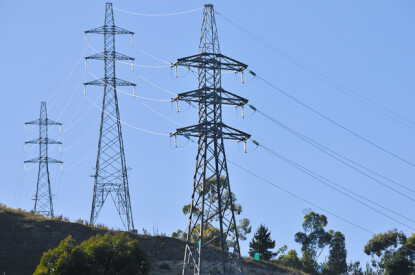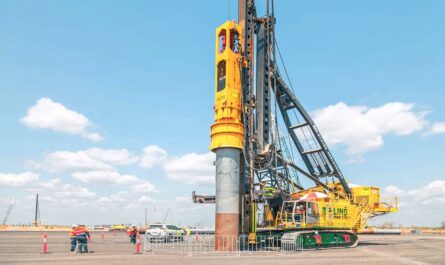Electricity forms the backbone of modern society. Overhead lines play a crucial role in transmitting power from generation plants to distant load centres across the world. With ever-increasing demand for power, the overhead transmission network needs to be augmented regularly. This places greater responsibility on overhead line products to ensure uninterrupted and reliable power transmission. This article takes a look at some of the key overhead line products and technologies that are helping strengthen power grids globally.
Conductors: The Workhorse of Transmission Systems
Conductors are the basic components that carry electricity through overhead transmission lines. Aluminum conductors are widely used for power transmission due to their light weight and high electrical conductivity. Aluminum conductor steel reinforced (ACSR) conductors consist of an aluminum strand wrapped around a steel core wire to provide extra strength. ACSR conductors have excellent mechanical and electrical properties and are suitable for use in medium to extra-high voltage power lines up to 800 kV. Aluminum conductor aluminum clad steel reinforced (ACAR) conductors use an aluminum cladding over the steel core instead of wrapping for higher corrosion resistance.
Insulators: Isolating Lines from Support Structures
Porcelain and polymer insulators are essential overhead line products that provide insulation between the energized conductors and the earthed support structures such as towers or poles. overhead lines Product Porcelain insulators made of ceramic materials have high mechanical strength and insulating properties. However, their brittleness makes them prone to damage from dropped objects, bird faults, or lightning strikes. Polymer insulators made from silicone rubber or composite materials offer higher impact resistance than porcelain. They have hydrophobic surfaces that shed water droplets easily, reducing insulator flashovers during wet conditions. New silicon composite insulators provide even better mechanical, electrical and environmental performance.
Hardware Fittings: Connecting System Components
A variety of hardware fittings are used to join conductor sections and attach conductors to insulators, towers and terminal equipment. Clamp connectors such as v-groove clamps provide mechanical and pressure connections between ACSR conductors. Dead-end hardware such as suspension type or tension type dead-ends are installed at angle points or terminal points of a line to withstand high tension loads in one direction. Jumper wires are used to connect disconnecting switches and series capacitors. Advancements in material science have enabled development of fittings that resist corrosion and provide reliable connections under varying operating conditions over line lifetimes.
Optical Ground Wire: Enhancing System Protection
Optical ground wires (OPGW) employ fiber optic cables inside a conductor type ground wire used on transmission lines. By enabling fiber-to-the-tower connectivity, OPGW integrates vital telecommunication capabilities into power transmission systems. Fiber optic based digital relays provide improved line protection and remote monitoring functions. They facilitate supervisory control and data acquisition (SCADA) to continuously monitor line performance parameters from a control center. During faults, OPGW based line current sensors combined with digital relays result in faster isolation of faults, minimizing outages. This enhances transmission line reliability, safety and security of supply.
Insulated Crossarms: Improving ROW Utilization
As the demand for space in rights-of-way (ROW) increases with network expansion, insulated crossarms have become popular. Made from FM-rated composite materials, these crossarms provide electric insulation between the tower body and attached overhead line equipment. This allows positioning lines closer to each other or installation of extra circuits on the same tower. Insulated crossarms reduce tower footing requirements and maximize ROW utilization. Their self-supported design and lightweight also increase installation speed. With better insulation coordination and pollution performance, newer designs of insulated crossarms are further optimizing tower loading capacity and line arrangement flexibility.
Modular Towers: Driving Infrastructure Modernization
Traditional lattice steel tower designs require considerable fabrication and erection time. This prompted development of prefabricated modular towers made of factory assembled tower sections. Popular systems such as self-supporting tubular towers or pre-twisted guyed tower units reduce steel requirements by 30-40% compared to solid tubular sections. Modular towers offer up to 70% faster erection by helicopter or crane, bringing line projects onstream early to meet demand growth. Lighter weight also reduces transportation costs and soil pressures. Some modular designs enable future line uprating or circuit augmentation with minimum site works, helping utilities efficiently modernize their transmission assets.
Advanced Conductors: Enhancing Transmission Capability
With HVDC and UHV transmission gaining ground, R&D in advanced conductors is driving performance improvements. High-temperature low sag (HTLS) conductors based on composite or trapezoidal wire designs allow higher continuous ratings than ACSR at equivalent line tensions. This permits higher power flows without sagging below safety clearances. Non-Aluminum Conductors (NAC) made of copper clad steel or aluminum alloy provides higher strength than ACSR for longer spans on difficult terrain. High strength carbon fiber composite conductors (CCCs) under research promise 3-4 times higher tension capacity than ACSR to facilitate multi-circuit lines within constrained ROWs. Such advanced conductors hold potential to substantially enhance asset utilization in bulk power transmission.
Upgrading Legacy Infrastructure
As transmission grids worldwide age, rehabilitation and life extension of older assets become crucial. New methods and products are addressing corrosion protection, refurbishment and retrofitting needs. Advanced anti-corrosion coatings protect bare lattice steel towers from rusting and extend design lives by 15-25 years. Replacing ACSR or insulators with higher performing alternatives also upgrades existing circuits. Techniques like tower hammering and tower raising optimize tower loading. Other refurbishment ways include structure replacement, circuit augmentation and line rerouting. Overall, such modernization activities leverage existing ROWs, minimizing environmental footprints while enabling continued wheeling of power over legacy infrastructure for several more decades.
Constant innovation on overhead line products tailored for diverse transmission projects, operating environments and ageing asset needs is propelling the power sector evolution globally. Stronger conductors, advanced monitoring systems, optimized support structures and refurbishment solutions continue to boost transmission reliability and facilitate access to clean energy. As demand for electricity and renewable integration grow in the coming decades, the research and supply chains supporting overhead line technologies will remain strategically important in sustaining affordable, efficient and sustainable power transmission worldwide.
*Note:
1. Source: Coherent Market Insights, Public sources, Desk research
2. We have leveraged AI tools to mine information and compile it



